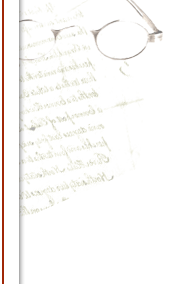
 |

HIS TEACHING ACTIVITIES
Gytis Padegimas began his teaching career back in 1974 at the Lithuanian Music Academy (then called the Lithuanian State Conservatoire), where he taught theatre and directed graduation productions at the Chair of Acting.
During his term as the Head of the Kaunas State Academic Drama Theatre (from 1993 to 1999), he prepared a class of 14 acting students and directed their graduation productions (Anton Chekhov’s “The Seagull,” Peter Hacks’s “Das Windloch,” and Anton Yasenka and Lesia Ukrainka’s musical “The Forest Song”). Gytis strove for all-round professional development of the young actors and did his best to introduce them to diverse schools of theatrical tradition. For this purpose he routinely invited prominent teachers from different countries: the renowned masters of the Japanese theatre Akira Matsui (Noh theatre) and Hasegawa Roku (Butoh dance), Swedish actress and director Lisa Brand (performance), and many others.
Later on, Gytis taught theatre at the Kaunas Vytautas Magnus University and the Klaipëda University, where, with his International Class students at the Chair of Theatre Directing, he staged William Saroyan’s “Coming Through the Rye,” Thornton Wilder’s “The Happy Journey to Trenton and Camden,” and David Grieg’s “San Diego.”
He also taught at the Internationale Michael-Tschechow-Schule für Schauspiel München in Germany and the International Theatre Academy GITIS Scandinavia in Arhus, Denmark (there he staged Tennessee Williams’s “The Night of the Iguana,” the graduation production for his students), and some other places (see pics and vids). Presently, many of Gytis Padegimas’s former students are successfully working at various theatres in Lithuania and other countries.
Gytis’s teaching style is not limited to mere one-sided development of professional skills – while teaching the profession, he always fosters social and spiritual growth of his students. To achieve this, Gytis resorts, among many other means, to his extensive learning about the founding fathers of the Lithuanian theatrical tradition. He has also used this knowledge to initiate and generate for the Lithuanian National TV Channel LRT the investigative cultural documentary series “Theatre Instinct” (see vids), dedicated to the eightieth anniversary of professional theatre in Lithuania. It likewise proved indispensible when he took part in yet another LRT cultural TV series called “From the Home-Museum of Liudas Truikys in Kaunas.”
In his teaching and directing work Gytis widely and successfully uses Michael Chekhov’s creative method, which he has championed for many years.
Up
MICHAEL CHEKHOV’S CREATIVE METHOD
“First of all, an actor should discover in himself his own individuality, and should learn to listen to its voice,” this laconic formula, which was suggested by Michael Chekhov, one of the most prominent theatre innovators in the twentieth-century and the author of a unique creative method, holds true for those who wish to know, uncover, and fully develop their creative powers – be it in some specific field of activity or in private life.
Marilyn Monroe, who had studied with the master, wrote: “As Michael Chekhov’s student I have learned more than acting…” Mala Powers, yet another one of his students and a researcher of his creative legacy, thus defines the essence of this ever-more-popular method: “Michael Chekhov’s acting technique is a technique of living.”
DISCOVERY AND STUDY
Gytis Padegimas first came in touch with the creative method of Michael Chekhov, the Russian genius actor and director, back in the beginning of the 1970-ies in Moscow, during his studies at the GITIS, the State Institute of Theatrical Art (now the Russian Theatre Academy), and promptly used it in his own work. Gytis’s guide into this forbidden world – the method was an ideological taboo in the Soviet Union – was Michael Chekhov’s former student and GITIS professor Maria Knebel. Gytis eagerly devoured copies of Michael Chekhov’s writings, which had been published in the cultural underground and were circulated by students from hand to hand for all-night reading sessions. These circumstances turned Michael Chekhov’s teaching into an almost religious cult, followed by its adepts with life-long commitment.
Up
RESEARCH AND APPLICATION
After his graduation, Gytis Padegimas came back to work in Lithuania and continued with his studies of Michael Chekhov’s method. His aspirations were boosted by one fortunate circumstance: from 1932 to 1933 Michael Chekhov had worked in Kaunas at the State Theatre, where he had directed three plays – William Shakespeare’s “Hamlet” (1932) and “Twelfth Night” (1933), and Nikolai Gogol’s “The Government Inspector” (1933). Back then, the Russian genius was also the leader of a theatre studio in Kaunas, and Gytis managed to get hold of his unique teaching materials, which had subsequently formed the basis for Michael Chekhov’s famous book “On the Technique of Acting.” Gytismet some of his surviving former students, among whom was the famous Lithuanian actress Kazimiera Kymantaitë. All this allowed Gytis Padegimas to gain priceless knowledge and experience, which he then successfully applied in his creative work as a director and a teacher.
In 1997, when Gytis was already the Head of the Kaunas State Academic Drama Theatre, he organized a seminar-workshop “Michael Chekhov and Russian-Lithuanian Cultural Ties in the First Half of the Twentieth Century,” dedicated to Michael Chekhov’s creative method. It featured prominent Russian theatre scholars (N. Krymova, A. Bartoshevich) and theatre practitioners (Y. Ananyev, Y. Avsharov), and entailed a trip to Michael Chekhov’s farm in Melikhovo (Russia) for the students of the Higher School of Acting Arts, which Gytis had established and was heading at the KSADT (from 1995 to 1998). At this farm-museum, an international conference and workshop were held, promoting research into Anton and Michael Chekhov’s’ work and dedicated to the centennial of the Moscow Art Theatre (see pics).
Later on, Gytis Padegimas became a constant participant at workshops, seminars and conferences on Michael Chekhov’s creative method, taking place in England, Germany, France, Latvia, Russia, Belarus and other countries (see the description of academic and methodological activities). He also gave presentations and wrote articles on the subject for various publications.
The accumulated knowledge and expertise allow Gytis Padegimas to come up with original and innovative applications of Michael Chekhov’s method, as well as to reveal some previously unknown aspects of its research and use. Since 2005, Gytis is a member of MICHA (the international Michael Chekhov Association).
THE GOAL
Michael Chekhov’s method, which Gytis Padegimas champions and teaches, aims at assisting one to discover, realize and develop one’s inner potential. This is achieved by mastering the elements of the method, learning actor’s creative psychology, and finding ways to apply the developed skills in everyday life.
Thus one acquires not only knowledge, but also the capacity to use it. One gains the fundamental skills of acting and the ability to focus and control one’s attention. Creative imagination is likewise developed, which makes one capable of finding optimal solutions in complicated circumstances. One learns how to relax and use one’s body, and how to search for artistic expression, needed to create an adequate character’s image. The method also develops one’s communication skills, ability to influence one’s partners, and gives creative courage to improvise in even most unexpected situations.
Up
Elvyra Markevièiûtë, theatre critic. Translated by Aivaras Mockus. |


 |